When it comes to creating a space that truly reflects your personality and style, interior designers play a crucial role. These creative professionals have the expertise to transform your home into a haven that is not only aesthetically pleasing but also functional. In Bangalore, a bustling city known for its vibrant culture and growing urban landscape, the demand for interior designers has been on the rise. Let’s explore why hiring a professional interior designer in Bangalore can be a game-changer for your home.
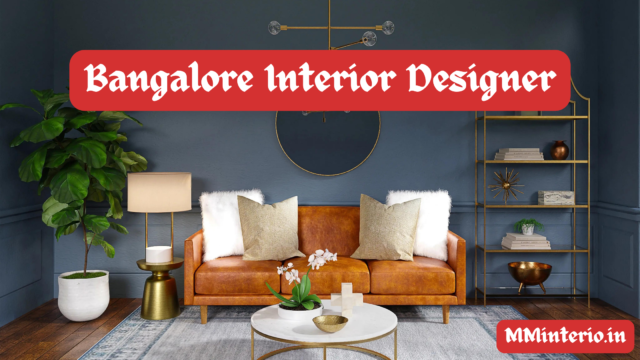 Understanding the Role of Interior Designers
Understanding the Role of Interior Designers
Interior designers are more than just decorators; they are design strategists who have a deep understanding of spatial planning, color psychology, and architectural concepts. They work closely with clients to bring their vision to life while considering factors such as functionality, budget, and timelines. From conceptualizing the design scheme to overseeing the execution, interior designers in Bangalore take care of every aspect to ensure a seamless transformation of your home.- Exploring the Growing Demand for Interior Designers in Bangalore
Bangalore, also known as the Silicon Valley of India, is a city brimming with innovation and dynamism. As the city continues to grow and individuals strive for higher standards of living, the demand for interior designers has seen a significant upsurge. People are increasingly recognizing the value of professional expertise in creating spaces that are not only visually pleasing but also align with their lifestyle and preferences. The rising demand for interior designers in Bangalore reflects the need for personalized interiors that enhance the quality of life for its residents. - Benefits of Hiring Professional Interior Designers
Engaging a professional interior designer in Bangalore can offer a multitude of benefits to homeowners. Firstly, these experts bring years of experience and a keen eye for design, allowing them to create spaces that are both beautiful and functional. They are well-versed in the latest trends and can provide valuable insights into incorporating innovative ideas into your home.
Secondly, hiring an interior designer can save you time and effort. From sourcing materials to managing contractors, interior designers take care of the entire project, ensuring a smooth and hassle-free experience for homeowners. They have established networks in the industry, which enables them to access high-quality materials and execute the project efficiently.
Lastly, interior designers have the ability to bring your vision to life while infusing their expertise and creativity. They listen to your ideas and preferences, working closely with you to create a space that is uniquely yours. Their attention to detail and thoughtful approach can elevate your home to new heights, leaving you with a space that is both visually stunning and reflective of your personality.
I. Choosing the Perfect Interior Designer for Your Home
Now that we understand the importance of hiring an interior designer, let’s delve into the process of choosing the perfect professional for your home.
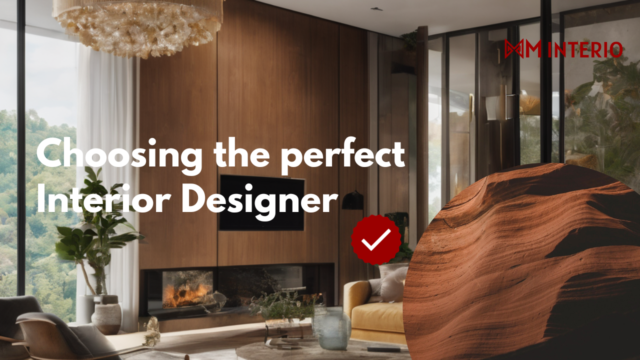
A. Evaluating the Design Style and Portfolio
- Assessing the Designer’s Aesthetic and Style Preferences
When selecting an interior designer, it’s essential to evaluate their design aesthetic and style preferences. Take a look at their previous projects to get a sense of their signature style. Some designers may lean towards minimalism, while others might have a flair for bold and eclectic designs. Choose a designer whose style resonates with your own vision to ensure a cohesive and harmonious outcome.
- Reviewing Previous Projects for Inspiration and Compatibility
By reviewing the designer’s previous projects, you can gain inspiration and assess their compatibility with your own design goals. Look for elements in their work that align with your vision, whether it’s a particular color scheme, use of textures, or innovative furniture layouts. This exercise will help you understand how well the designer can translate your ideas into a tangible reality.
- Analyzing the Designer’s Ability to Incorporate Personal Preferences
One of the key reasons to hire an interior designer is their ability to incorporate personal preferences into the design process. During your evaluation, pay close attention to how well the designer listens and understands your needs. Do they take the time to understand your lifestyle, preferences, and aspirations for the space? A designer who values and incorporates your input ensures that the final result is tailored to your taste and lifestyle.
B. Examining the Expertise and Experience
- Verifying the Designer’s Technical Skills and Knowledge
When it comes to interior design, technical skills and knowledge are essential. Ensure that the designer you choose is well-versed in the latest design software, material specifications, and construction techniques. This will enable them to effectively communicate with contractors and suppliers, ensuring a smooth execution of the project.
- Considering the Designer’s Experience with Similar Projects
Experience in handling projects similar to yours is vital when selecting an interior designer. A designer who has successfully worked on projects resembling yours will have a better understanding of the challenges that may arise and how to overcome them. Look for testimonials and reviews from previous clients to gauge the designer’s expertise and ability to deliver on their promises.
- Assessing the Designer’s Ability to Push Boundaries Creatively
While technical skills are crucial, a designer’s creativity is equally important. Choose a designer who can think out of the box, pushing boundaries to create unique and innovative designs. Their ability to infuse creativity into every aspect of the project, from furniture selection to lighting design, will result in a home that is truly one-of-a-kind.
C. Understanding the Collaborative Process
- Establishing Effective Communication Channels
Clear and effective communication is the cornerstone of a successful collaboration with an interior designer. Ensure that the designer possesses excellent listening skills and a willingness to understand and incorporate your feedback. Establishing regular channels of communication, whether it’s in-person meetings, virtual consultations, or communication tools like email and messaging apps, will ensure that your ideas and concerns are addressed promptly.
- Ensuring Compatibility and Rapport with the Designer
Working closely with an interior designer can be an intimate and personal experience. It’s important to choose someone with whom you feel comfortable and have a good rapport. A designer who understands your needs and respects your input will create a collaborative environment where ideas can be freely exchanged, resulting in a better end product.
- Outlining a Clear Project Timeline and Budget Parameters
Transparency is key when it comes to project timelines and budget parameters. Discuss your expectations regarding project duration and establish a realistic timeline with the designer. Similarly, communicate your budget constraints clearly to avoid any misunderstandings down the line. A designer who respects your budget and can work within those limitations demonstrates their professionalism and commitment to your project’s success.
II. Transforming Your Living Space with Innovative Designs
Now that you have selected the perfect interior designer, it’s time to embark on the journey of transforming your living space. Let’s explore how innovative designs can revamp your living room, create a serene bedroom retreat, and enhance your kitchen and dining area.
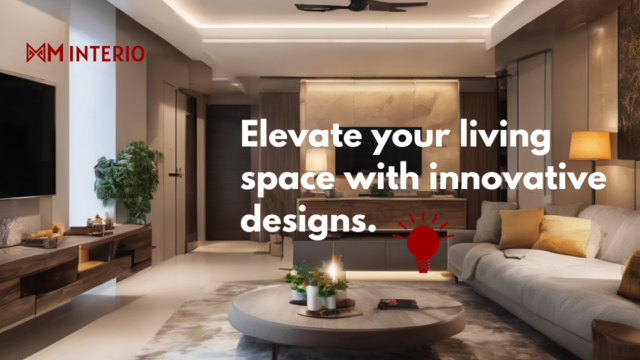
A. Revamping the Living Room
- Maximizing Space and Functionality
The living room is the heart of any home, and optimizing its space and functionality is paramount. Collaborate with your interior designer to create a layout that maximizes seating arrangements and traffic flow. Clever storage solutions, such as built-in cabinets or hidden compartments, can also help declutter the space, keeping it organized and visually pleasing.
- Incorporating Color Schemes and Textures
Color and texture play a crucial role in setting the mood of a room. Work with your interior designer to select a color scheme that suits your taste and complements the furniture and accessories. Experiment with different textures, such as plush rugs, textured wallpapers, or accent pillows, to add depth and interest to the space.
- Balancing Furniture and Accessory Selection
Finding the right balance between furniture and accessories is essential for a well-designed living room. Collaborate with your designer to select furniture pieces that are not only aesthetically pleasing but also comfortable and functional. Pay attention to scale and proportion, ensuring that the furniture fits the room without overpowering it. Similarly, carefully curate accessories that complement the overall design scheme, making the room feel cohesive and inviting.
B. Creating a Serene Bedroom Retreat
- Designing for Relaxation and Comfort
The bedroom is a sanctuary, a place to unwind and rejuvenate. Collaborate with your interior designer to create a design that promotes relaxation and comfort. Choose soft, soothing colors and fabrics that evoke a sense of tranquility. The selection of a comfortable mattress, high-quality bedding, and blackout curtains can further enhance your sleep environment.
- Selecting Cozy Bedding and Lighting
Good sleep is essential for overall well-being, and selecting cozy bedding and lighting is crucial to achieving a restful environment. Work with your designer to choose bedding that suits your comfort requirements and complements the overall design scheme. Thoughtfully placed lighting, such as bedside lamps or dimmable overhead fixtures, can create a warm ambiance, perfect for winding down at the end of the day.
- Incorporating Personal Touches and Storage Solutions
Personal touches can make a bedroom feel truly yours. Collaborate with your interior designer to incorporate elements that reflect your personality and interests, such as artwork, photographs, or sentimental objects. Additionally, discuss storage solutions with your designer to maximize space and keep the bedroom clutter-free. Custom-built wardrobes or under-bed storage options can help create a serene and organized atmosphere.
C. Enhancing Your Kitchen and Dining Area
- Optimizing Workflow and Organization
The kitchen and dining area are the heart of any home, where shared meals and memories are made. Collaborate with your interior designer to optimize workflow and organization in these spaces. Thoughtfully planned layouts, incorporating the work triangle concept, can enhance efficiency and ensure that cooking and meal preparation are a breeze. Utilize innovative storage solutions, such as pull-out drawers or intelligent cabinetry systems, to keep your kitchen organized and clutter-free.
- Choosing High-Quality Materials and Appliances
Investing in high-quality materials and appliances for your kitchen and dining area can make a significant difference in both form and function. Work closely with your interior designer to select durable and aesthetically pleasing materials, such as quartz countertops or custom-made cabinetry. Similarly, choose energy-efficient appliances that not only reduce your carbon footprint but also enhance the overall efficiency of your kitchen.
- Designing a Welcoming Dining Experience
The dining area should be designed to create a warm and inviting atmosphere for shared meals and gatherings. Collaborate with your interior designer to select the right dining table and chairs that complement the overall aesthetic of your home. Consider incorporating elements like statement lighting fixtures or a cozy seating nook to elevate the dining experience. Thoughtful design choices, such as tableware and tabletop accessories, can also add a personal touch and create a welcoming ambiance for guests.
III. Breaking the Mold: Unconventional Interior Design Approaches
While traditional design approaches have their merits, breaking the mold and embracing unconventional design concepts can result in truly unique and inspiring spaces. Let’s explore some unconventional approaches to interior design that can set your home apart.
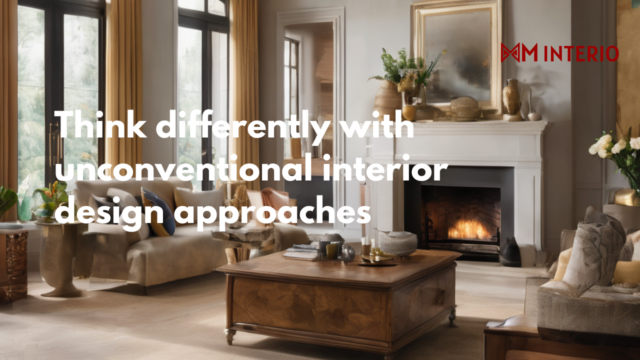
A. Embracing Minimalist Design
- Streamlining Spaces and Reducing Clutter
Minimalist design focuses on simplifying spaces and reducing clutter. Collaborate with your interior designer to create a clean and uncluttered environment by carefully curating furniture and accessories. Utilize smart storage solutions to keep belongings concealed, allowing the design elements to shine.
- Utilizing Sleek and Functional Furniture
Minimalist design is often characterized by sleek and functional furniture pieces. Choose pieces with clean lines and simple silhouettes that seamlessly blend into the space. Opt for multipurpose furniture, such as ottomans with hidden storage or modular shelving units, to maximize functionality while maintaining a minimalist aesthetic.
- Promoting Calm and Tranquility through Clean Lines
Minimalist design promotes a sense of calm and tranquility through clean lines and a restrained color palette. Collaborate with your designer to create a space that is serene and inviting by incorporating soft neutral tones, natural materials, and diffused lighting. Let the simplicity of the design speak for itself, creating a sanctuary-like ambiance in your home.
B. Emphasizing Sustainable and Eco-Friendly Designs
- Utilizing Recycled and Environmentally Conscious Materials
Sustainability and eco-consciousness are increasingly important considerations in interior design. Collaborate with your interior designer to incorporate recycled or upcycled materials into your home, such as reclaimed wood or repurposed furnishings. Choose low VOC paints and finishes to minimize indoor air pollution while still achieving stunning aesthetics.
- Incorporating Energy-Efficient Solutions
Energy efficiency is not only environmentally friendly but also cost-effective. Work with your designer to select energy-efficient appliances, such as LED lighting or energy-rated appliances, that reduce your carbon footprint and lower utility bills. Incorporating smart home technology, like thermostats or automated lighting systems, can further enhance energy efficiency.
- Creating Harmonious Spaces in Alignment with Nature
Nature-inspired designs can create harmonious spaces that promote well-being and connection with the environment. Collaborate with your interior designer to incorporate biophilic design elements, such as living walls or natural materials like bamboo or rattan. Create a seamless transition between indoor and outdoor spaces, allowing nature to become an integral part of your home.
C. Incorporating Smart Home Technology
- Integrating Automation for Convenience and Efficiency
Smart home technology has revolutionized the way we live. Work closely with your interior designer to incorporate automation systems that enhance convenience and efficiency in your daily life. Connect devices like lighting, thermostats, or entertainment systems to create personalized ambiances with a single touch or even voice commands.
- Enhancing Security and Safety Measures
A well-designed home is not only aesthetically pleasing but also safe and secure. Collaborate with your interior designer to integrate smart security systems, such as cameras or smart locks, to enhance the safety of your home. Discuss your concerns and requirements with your designer, ensuring that the technology seamlessly blends with the overall design.
- Creating Personalized Ambiances with Smart Lighting Systems
Lighting plays a crucial role in setting the mood and ambiance of a space. Collaborate with your interior designer to create personalized lighting schemes that cater to different activities and moods. Incorporate smart lighting systems that allow you to control and adjust lighting levels based on your preferences, creating a truly immersive and dynamic environment.
IV. The Cost Factor: Budgeting and Financing Your Interior Design Project
While the dream of a beautifully designed home is exciting, it is essential to consider the cost implications and explore financing options that fit your budget. Let’s delve into the factors that influence the total cost of an interior design project and explore different financing methods.
A. Understanding the Cost Components
- Factors Influencing the Project’s Total Cost
Several factors contribute to the total cost of an interior design project. These include the scope of work, size of the space, complexity of the design, material selection, and any additional services required, such as electrical or plumbing work. Collaborate with your interior designer to determine a realistic budget based on these
Related Posts
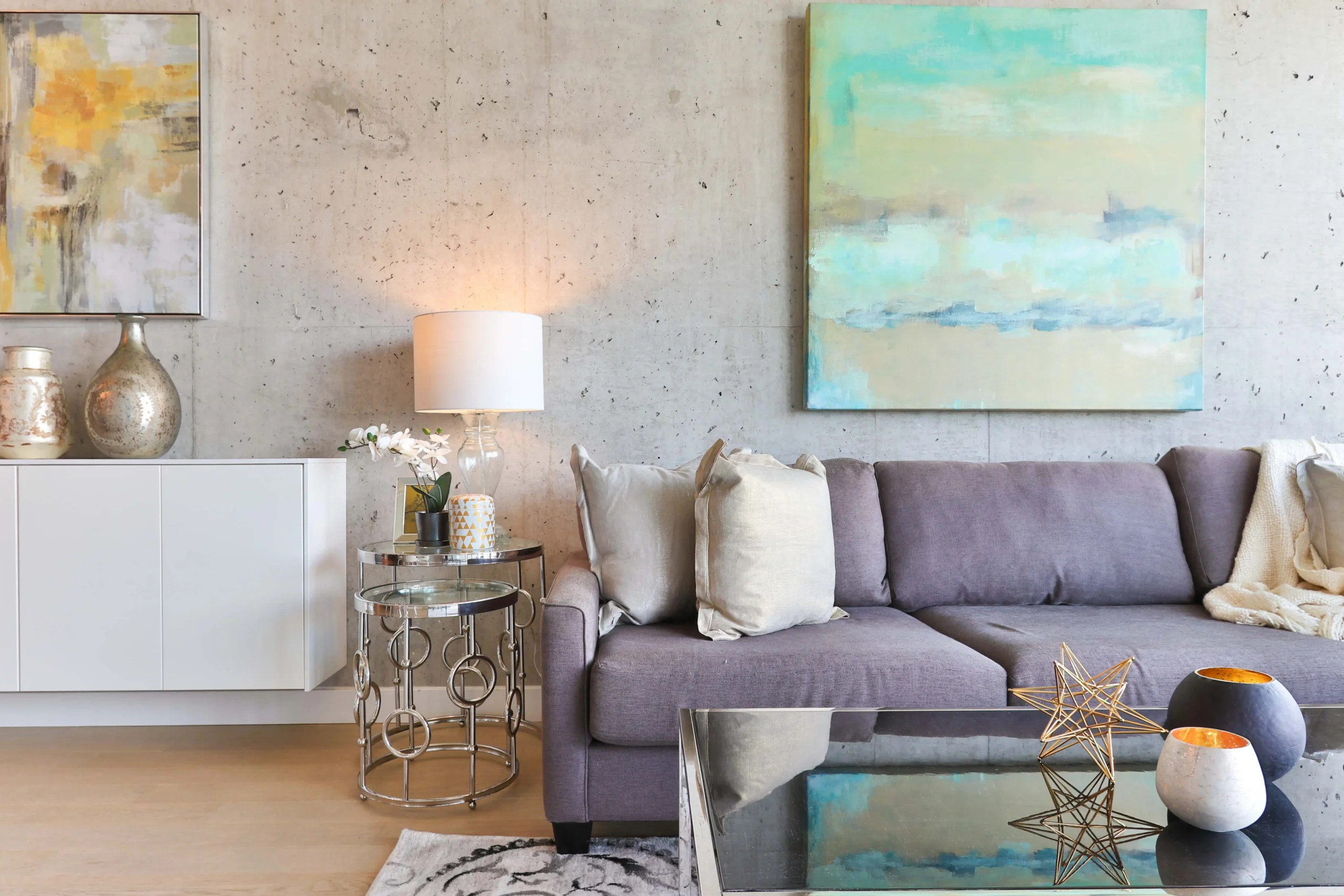
Bridging Tradition and Modernity: A Unique Approach to Interior Design in Bangalore
In the vibrant tapestry of Bangalore, where tradition meets innovation, our approach to interior design is a nuanced dance between

The Best Interior Designer in Bangalore! MMInterio
The Ultimate Guide to Finding the Best Interior Designer in Bangalore: Spotlight on MMInterio Are you dreaming of transforming your